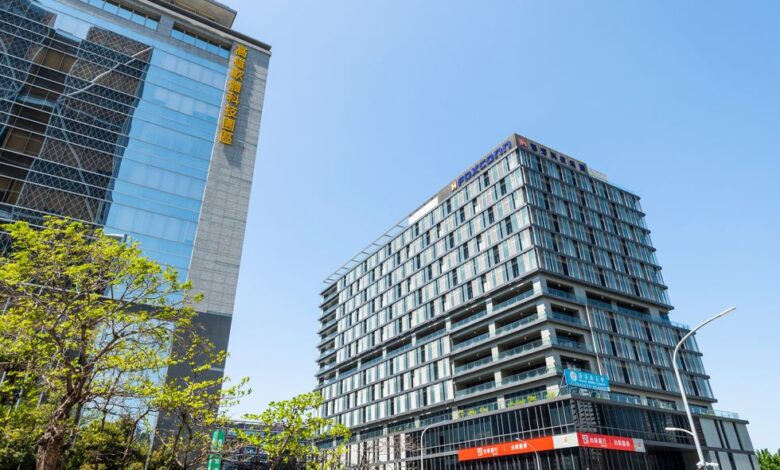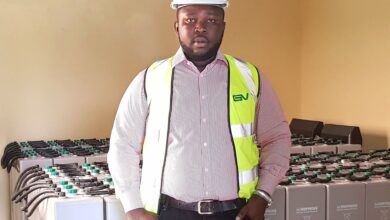Taiwan’s AI Goals Will Need More Tech Talent

Already positioned at the center of the global semiconductor industry, Taiwan now wants to make itself a hub for innovation in advanced artificial intelligence. The island nation’s new leadership, in place since May 2024, has taken a number of steps to help the country take better advantage of the AI that its chips enable.
The fruits of the effort are starting to show. Electronics manufacturing giant Foxconn is building the country’s biggest AI supercomputer ever, using Nvidia’s latest chips. But Taiwan’s AI effort hinges on it finding enough skilled workers to do the job.
The island nation is confronting some pressing challenges—a declining birth rate of approximately 5.81 births per 1,000 people, an aging population, and rising geopolitical tensions in the Indo-Pacific. So leveraging AI for economic growth and sustainability has become increasingly vital, according to vice president Bi-khim Hsiao.
“AI can help us develop new solutions more quickly and efficiently, becoming another key engine for economic growth,” Hsiao said at an AI and sustainability forum in July.
President Lai Ching-te’s government is rolling out new measures designed to build robust infrastructure, promote AI adoption across various sectors, invest in data centers, establish supercomputers, and advance Taiwan’s control over its own AI systems.
It’s part of a strategic plan Lai’s Cabinet approved to strengthen its “Five Trusted Industry Sectors”: semiconductors, artificial intelligence (AI), defense, security, and next-generation communications. In the AI sector, Taiwan aims to leverage its hardware industry to drive growth in high-value AI applications‑targeting an output of over NT$1 trillion (US$31 billion) by 2026, from the current approximately NT$800 billion dollars, and train 200,000 AI and related professionals over the next four years.
To support these ambitions, the country will enhance the National Development Fund’s investments in AI-related companies and collaborate with the Ministry of Digital Affairs on a NT$10 billion initiative focused on the AI industry.
Furthermore, Taiwan is bolstering its technological infrastructure by improving computing power and developing energy-efficient data centers. Foxconn’s future supercomputer is an example. The system, which should be capable of 90 billion operations per second (90 exaflops), will be powered by 6,902 of Nvidia’s new GB200 (Grace-Blackwell) CPUs and GPUs.
Meanwhile, the government is also actively pursuing international partnerships while inviting U.S. AI startups to set up operations in Taiwan.
Workforce Issues
Taiwan’s small, 23.4 million population, its aging demographic, and its low birth rate make achieving its AI goals difficult. In a Cabinet meeting last month, Premier Cho Jung-tai underscored the necessity cultivating domestic expertise while attracting international professionals.
Although not exclusive to AI workers, Taiwan’s National Development Council (NDC) outlined a plan to educate and train 450,000 skilled professionals by 2028. The initiative also seeks to attract 120,000 foreign experts and 80,000 foreign technicians to fill a gap 200,000-person gap projected for Taiwan’s workforce by that date.
“This will ensure a sufficient supply of talent needed for the next phase of national development and build Taiwan’s competitive advantage,” Cabinet spokesperson Michelle Lee told reporters.
One of the key contributors to Taiwan’s training effort is the Taiwan AI Academy (AIA), founded by the Taiwanese AI luminary, the late Sheng-Wei Chen. Since 2018, the Taiwan AIA has been offering a range of training courses aimed at upskilling and reskilling the domestic workforce; it’s backed by a joint fund from six domestic enterprises involved in AI development.
But the domestic workforce likely won’t be enough, and Taiwan is competing with many other nations for AI talent. “To bring in international talents, Taiwan really needs to highlight its incentives, since there’s a huge global demand for top-tier AI professionals,” says Ming-Shun Tsai, Provost of Taiwan AIA.
“In semiconductor manufacturing, machine learning and deep learning are increasingly being used to speed up product development and improve yield rates. This trend is growing fast.” —anonymous semiconductor manager
The government shares this view. Last month, NDC Deputy Minister Kao Shien-quey announced plans to enhance the Taiwan Gold Card program by introducing what it’s calling ‘Global Elite’ cards. The employment gold card currently serves as an open work permit, allowing foreign professionals with monthly salary exceeding NT$160,000 (about US $4,956, or $59,472 per year) to work in Taiwan for up to three years. The Global Elite card is targeted toward top-tier professionals who will work for local companies that offer annual salaries surpassing NT$6 million (around US $188,306). Recipients will be eligible for permanent residency after just one year of employment and will gain access to social benefits, including long-term care and disability services for their families. Additionally, their spouses will qualify for work permits.
Naturally, NDC views international students at Taiwanese universities as a vital source of future talent. Earlier this year, a new program was launched to attract students from nearby ASEAN countries, including Vietnam, Indonesia, and the Philippines, with a focus on AI, semiconductors, and other fields. Participants will receive a full tuition and fee waiver for up to two years, along with a monthly stipend of at least NT$10,000 paid by local companies. In return, graduates must work in Taiwan for at least two years after finishing their studies.
AI Industry Heads South
The AI industry is starting to cluster in southern Taiwan. The Foxconn AI supercomputer is to be constructed in Kaohsiung, and in August, Nvidia-rival Advanced Micro Devices, Inc. (AMD) announced plans to establish R&D hubs there and in Tainan, both of which host science parks.
“With major players like TSMC and global tech giant Nvidia setting up operations in Kaohsiung, it’s essential for the government to invest enough resources in universities in southern Taiwan. This will help us nurture the talents that’s urgently needed in the island’s key industries,” says Yue-Min Wan, a professor of electronics engineering at I-Shou University in southern Kaohsiung City.
TSMC itself, which has advanced fabs in the Tainan area, is in need of more AI talent. “In semiconductor manufacturing, machine learning and deep learning are increasingly being used to speed up product development and improve yield rates. This trend is growing fast,” says a senior manager in Taiwan’s semiconductor industry who did not want to be named.
The manager notes that companies are increasingly investing in AI training programs and service subscriptions to upskill their workforce. This has led to a rising demand for experts capable of integrating AI with environmental and sustainability initiatives, in an effort to drive both risk management and innovation, he says.
IEEE Spectrum




